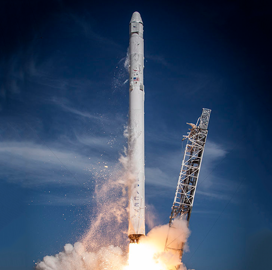
Earth observation
SpaceX Rocket Delivers NASA Ecosystem Observational Spacecraft to Sun-Synchronous Orbit
SpaceX’s Falcon 9 completed the delivery of NASA’s Plankton, Aerosol, Cloud, ocean Ecosystem spacecraft into a sun-synchronous orbit on Thursday.
The NASA spacecraft carries instruments to study ocean colors as it monitors biological activity, including phytoplankton, clouds and aerosols, in the atmosphere.
The PACE development, which started 20 years ago, encountered multiple bumps along the way, including several attempts during the Trump administration to cancel the mission, SpaceNews reported.
Tim Dunn, senior launch director at NASA’s Launch Services Program, said it is the first government mission to launch a polar or sun-synchronous orbit from Florida since 1960.
PACE is not the only Earth science mission scheduled to be launched by the U.S. space agency in 2024. The Geostationary Carbon Observatory mission will place a hosted satellite in geostationary orbit above the Americas to collect observations on the concentrations of carbon dioxide, methane and solar-induced fluorescence to help measure greenhouse gases and vegetation health.
It is also expected to launch the Total and Spectral Solar Irradiance Sensor-2 spacecraft to gather detailed measurements of how much radiation the sun emits to Earth on an hour-by-hour basis.

Category: Space




